Key-points
-
텐서(Tensor)
-
넘파이(NumPy)
-
텐서 조작(Tensor Manipulation)
-
브로드캐스팅(Broadcasting)
Learning
-
Vector, Matrix and Tensor
-
Numpy Review
-
PyTorch Tensor Allocation
-
Matrix Multiplication
-
Other Basic Ops
Vector, Matrix and Tensor
*Preview
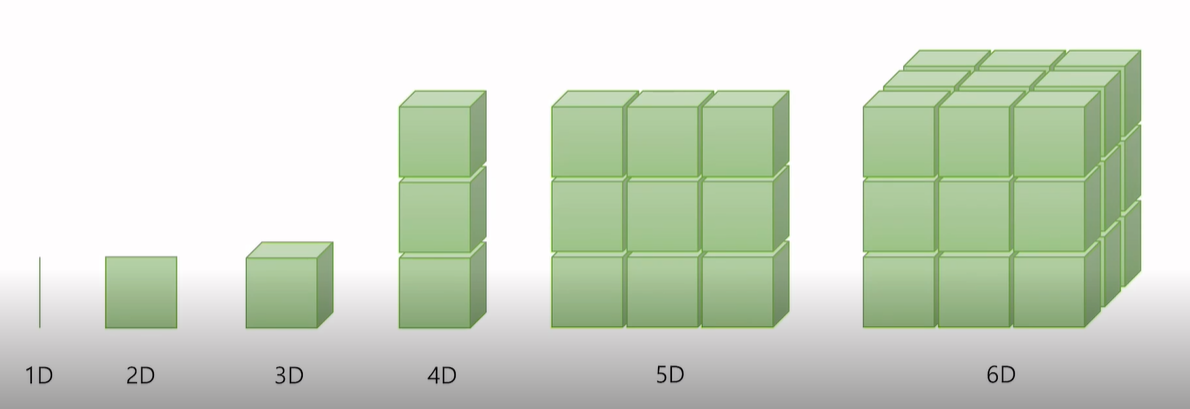
*2D Tensor(Typical Simple Setting)
- |t| = (batch size, dim)
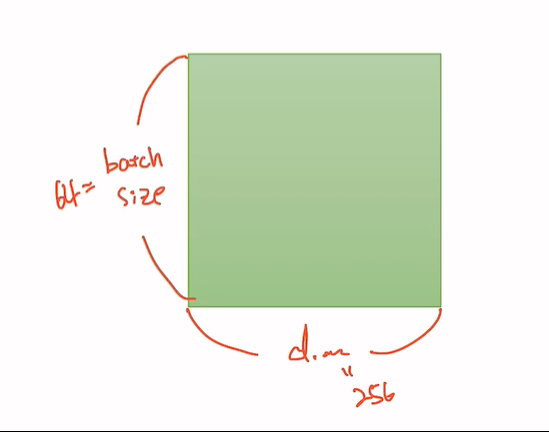
*3D Tensor(Typical Computer Vision)
- |t| = (batch size, width, height)
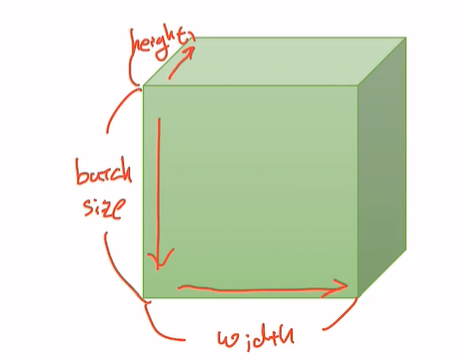
*3D Tensor(Typical NLP)
- |t| = (batch size, length, dim)
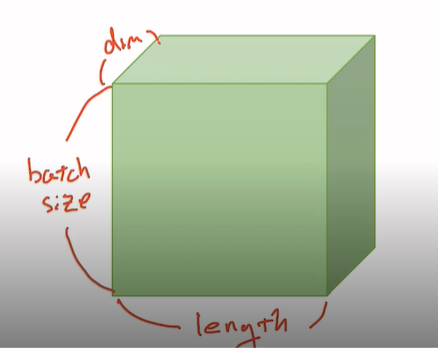
Numpy Review
Numpy와 Pytorch는 서로 호환이 너무 잘 되어서 직관적 이해가 편합니다.
#파이토치 설치
! pip install torchvision
#필요 라이브러리 import
import numpy as np
import torch#1D Array with Numpy
t = np.array([0., 1., 2., 3., 4., 5., 6.])
print(t) #[0,1,2,3,4,5,6]
print('Rank of t :', t.ndim) #t의 차원, Rank of t: 1
print('Shape of t:', t.shape)#행렬 형태, Shape of : (7,)
print('t[0] t[1] t[-1] = ', t[0], t[1], t[-1])#Element, t[0] t[1] t[-1] = 0.0 1.0 6.0
print('t[2:5] t[4:-1] = ', t[2:5], t[4:-1]) #Slicing, t[2:5] t[4:-1] = [2. 3. 4.] [4. 5.]
print('t[:2] t[3:] = ', t[:2], t[3:])#Slicing, t[:2] t[3:] = [0. 1.] [3. 4. 5. 6.]
#1D Array with PyTorch
a = torch.FloatTensor([0.,1.,2.,3.,4.,5.,6.])
print(a) #tensor([0., 1., 2., 3., 4., 5., 6.])
print(a.dim()) # rank, 차원 , 1
print(a.shape) #shape 행렬, torch.Size([7])
print(a.size()) # shape, torch.Size([7])
print(a[0], a[1], a[-1]) #Element, tensor(0.) tensor(1.) tensor(6.)
print(a[2:5], a[4:-1]) #Slicing, tensor(0.) tensor(1.) tensor(6.)
print(a[:2], a[3:])#Slicing, tensor([0., 1.]) tensor([3., 4., 5., 6.])#2D Array with Numpy
k = np.array([[1., 2., 3.], [4., 5., 6.],[7.,8.,9.], [10.,11.,12.]])
print(k)
#[[ 1. 2. 3.]
[ 4. 5. 6.]
[ 7. 8. 9.]
[10. 11. 12.]]
print('Rank of k: ', k.ndim)#k차원, Rank of k: 2
print('Shape of k: ', k.shape)#행렬 형태, Shape of k: (4, 3)#2D Array with PyTorch
b = torch.FloatTensor([[1., 2., 3.],
[4., 5., 6.],
[7., 8., 9.],
[10., 11., 12.]])
print(b)
##tensor([[ 1., 2., 3.],
[ 4., 5., 6.],
[ 7., 8., 9.],
[10., 11., 12.]])
print(b.dim()) #rank
print(b.size()) #shape
print(b[:, 1])
print(b[:, 1].size())
print(b[:, :-1])
#
2
torch.Size([4, 3])
tensor([ 2., 5., 8., 11.])
torch.Size([4])
tensor([[ 1., 2.],
[ 4., 5.],
[ 7., 8.],
[10., 11.]])Broadcasting
#Same shape
a = torch.FloatTensor([[3,3]])
b = torch.FloatTensor([[2,2]])
print(a + b) # tensor([[5., 5.]])
#Vector + Scalar
a1 = torch.FloatTensor([[1, 2]])
a2 = torch.FloatTensor([3]) # 3 --> [[3,3]]
# 사이즈가 달라도 사이즈를 맞혀준다
print(a1 + a2) #tensor([[4., 5.]])
# 2 x 1 vector + 1 x 2 vector
b1 = torch.FloatTensor([[1, 2]])
b2 = torch.FloatTensor([[3], [4]])#[3,3], [4,4]
print(b1 + b2)
#tensor([[4., 5.],
[5., 6.]])Multiplication vs Matrix Multiplication
print()
print('-----------')
print('Mul vs Matmul')
print('-----------')
a = torch.FloatTensor([[1, 2], [3, 4]])
b = torch.FloatTensor([[1], [2]])
print('Shape of Matrix 1: ', a.shape) #2x2
print('Shape of Matrix 2: ', b.shape) #2x1
print(a.matmul(b)) #2x1
c = torch.FloatTensor([[1, 2], [3, 4]])
d = torch.FloatTensor([[1], [2]])
print('Shape of Matrix 1: ', c.shape) #2x2
print('Shape of Matrix 2: ', d.shape) #2x1
print(c.mul(d)) #2x1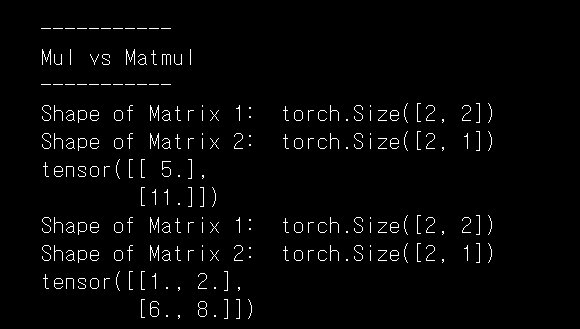
Mean
k = torch.FloatTensor([1,2])
print(k.mean()) #tensor(1.5000)
#Can't use mean() on integers
k1 = torch.LongTensor([1, 2])
try:
print(k1.mean())
except Exception as exc:
print(exc)
#mean(): input dtype should be either floating point or complex dtypes. Got Long instead.
k2 = torch.FloatTensor([[1, 2], [3, 4]])
print(k2)
# tensor([[1., 2.],
[3., 4.]])
print(k2.mean())
print(k2.mean(dim=0))
print(k2.mean(dim=1))
print(k2.mean(dim=-1))
#결과
tensor(2.5000)
tensor([2., 3.])
tensor([1.5000, 3.5000])
tensor([1.5000, 3.5000])
Max and Argmax
r = torch.FloatTensor([[10, 20], [30, 40]])
print(r)
#결과
tensor([[10., 20.],
[30., 40.]])
print(r.max())# Returns on value: max , tensor(40.)
print(r.max(dim = 0))
print('Max: ', r.max(dim=0)[0])
print('Argmax: ', r.max(dim=0)[1])
#결과
torch.return_types.max(
values=tensor([30., 40.]),
indices=tensor([1, 1]))
Max: tensor([30., 40.])
Argmax: tensor([1, 1])
print(r.max(dim=1))
print(r.max(dim=-1))
#결과
torch.return_types.max(
values=tensor([20., 40.]),
indices=tensor([1, 1]))
torch.return_types.max(
values=tensor([20., 40.]),
indices=tensor([1, 1]))
